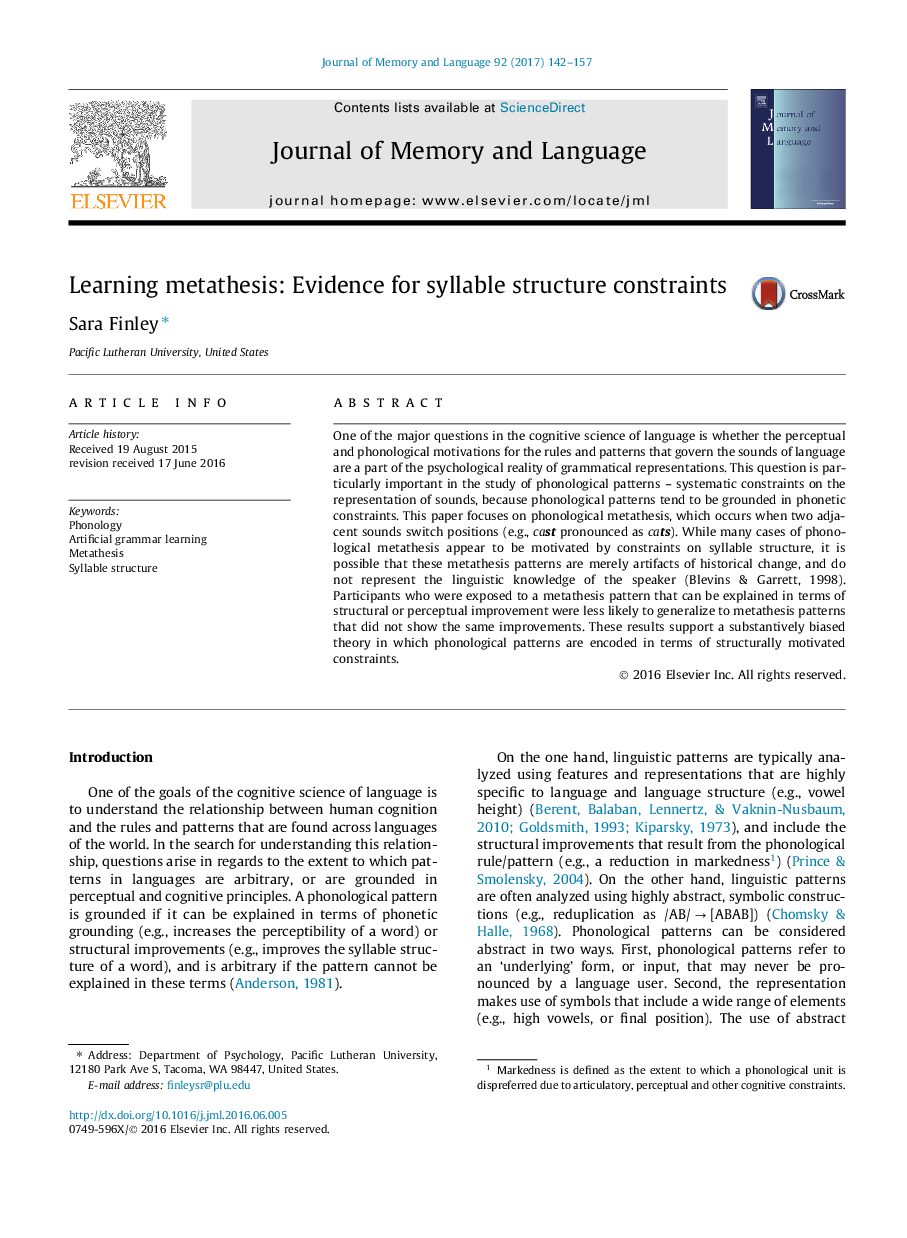| Article ID | Journal | Published Year | Pages | File Type |
|---|---|---|---|---|
| 931740 | Journal of Memory and Language | 2017 | 16 Pages |
•English speaking learners were exposed to a novel phonological metathesis pattern.•Learners exposed to a pattern that impaired syllable structure generalized broadly.•Learners exposed to a pattern that improved syllable structure generalized narrowly.•Results support a theory of substantively biased learning.•Language users make use of perceptual and cognitive constraints when learning novel phonological patterns.
One of the major questions in the cognitive science of language is whether the perceptual and phonological motivations for the rules and patterns that govern the sounds of language are a part of the psychological reality of grammatical representations. This question is particularly important in the study of phonological patterns – systematic constraints on the representation of sounds, because phonological patterns tend to be grounded in phonetic constraints. This paper focuses on phonological metathesis, which occurs when two adjacent sounds switch positions (e.g., cast pronounced as cats). While many cases of phonological metathesis appear to be motivated by constraints on syllable structure, it is possible that these metathesis patterns are merely artifacts of historical change, and do not represent the linguistic knowledge of the speaker (Blevins & Garrett, 1998). Participants who were exposed to a metathesis pattern that can be explained in terms of structural or perceptual improvement were less likely to generalize to metathesis patterns that did not show the same improvements. These results support a substantively biased theory in which phonological patterns are encoded in terms of structurally motivated constraints.
